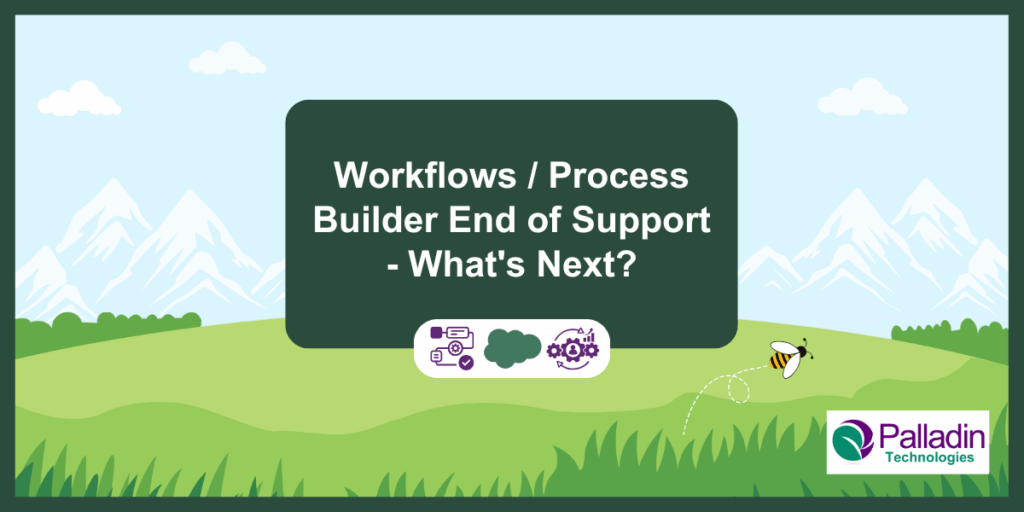Salesforce has officially announced the gradual retirement of Workflow Rules and Process Builders—two core tools that have been central to process automation within the platform for over a decade. Starting in 2025, users will no longer be able to create new flows using these legacy technologies. Instead, Salesforce encourages transitioning to Flow Builder, the unified and more powerful tool that will replace them. While this shift presents some challenges, it also offers a great opportunity to streamline automation strategies. The key is proactive planning and clear communication with clients.
Why Are They Being Retired?
Salesforce’s decision aims to consolidate its automation capabilities into a single, modern solution: Flow. With Flow, users can create more advanced, efficient, and scalable automations using richer logic, multiple triggers, and enhanced debugging and monitoring features.
Maintaining multiple automation tools leads to redundancy, inconsistent behavior, and a steeper learning curve. By focusing on Flow, Salesforce simplifies the platform, making it easier to manage and scale automation efforts across organizations.
What Should Clients Know?
First, reassure them: existing automations built with Workflow Rules and Process Builders will not stop working immediately. However, it’s crucial to begin planning the migration as early as possible. As of December 2025, users will no longer be able to create new workflows or process builders, and official support will eventually be reduced to essential maintenance.
It’s also important to emphasize that Flow isn’t just a replacement—it’s an evolution. Many automations that previously required multiple process builders can now be consolidated into a single, more efficient flow. This leads to better performance and easier error tracking.
How to Prepare for the Transition
- Audit and assessment: Begin with a thorough review of all current automations. Tools like the Salesforce Migrate to Flow Tool help identify, evaluate, and plan your migration in a structured way.
- Team training: Flow comes with a learning curve, especially for teams used to Workflow Rules and Process Builders. Make sure both technical and business teams are trained in using Flow effectively.
- Staged migration: There’s no need to migrate everything at once. A phased approach—by module or business function—reduces risk and allows for controlled testing.
- Process reengineering: Use the migration as a chance to revisit and optimize your automation strategies. Don’t just replicate—improve.
Conclusion
The retirement of Workflow Rules and Process Builders signals the end of an era in Salesforce automation, but it also opens the door to a more powerful, centralized, and modern future. The most important steps are to anticipate the change, communicate clearly with clients, and guide them through a strategic and organized transition. With the right approach, this change can be not just manageable, but a meaningful opportunity to enhance the value clients get from Salesforce.
Learn More About Partnering With Us!
Salesforce Consultant- Media Focus
Edgar Gutierrez is a Salesforce Consultant with over five years of experience delivering CRM solutions for the media and tech industries. He specializes in Service Cloud, Sales Cloud, and CPQ, leading full-cycle implementations that optimize sales, service, and quote-to-cash workflows.
Edgar has supported both boutique and enterprise clients, aligning Salesforce capabilities to real-world needs through discovery, support, and managed services. Known for his strategic mindset and technical depth, he helps clients maximize ROI and user adoption. His agility and client-first approach make him a trusted partner for high-impact, scalable Salesforce transformations.

